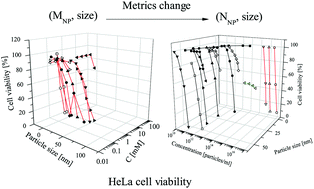The puzzle of toxicity of gold nanoparticles. The case-study of HeLa cells
Abstract
Because of the growing interest of gold nanoparticles in biomedical and biotechnological applications, their toxicity is becoming an increasingly important issue and, in the last few years, there has been continuously expanding research activity in this field. However, due to the intrinsic complexity of the problem, together with the lack in the standardization of the experimental procedures, there is to date a large scattering of the results that still prevents reaching a general consensus of the possible toxic effects of gold nanoparticles in biological systems of increasing complexity (cell membrane, cells, tissues, organs and human body). The strong need to systematize the data suggests employing an appropriate metric, as far as the particle concentration is concerned, that could help in comparing and organizing the available data in a more intelligible scenario. In this note, some recent literature data on the viability of HeLa cells exposed to differently functionalized gold nanoparticles have been analyzed on the basis of a metric based on the numerical particle concentration (number of particles per unit volume of cell culture) that, to a certain extent, takes into account both the size and the shape of nanoparticles. This analysis offers a much more intelligible behavior than the one based on metrics that considers mass concentration (molar concentration) or particle size. At least, in the particular case of HeLa cells, the analysis of the data shows that differently functionalized gold nanoparticles behave similarly and that the different surface coating of the different nanoparticles considered defines the range of particle concentration where toxic effects begin. This kind of analysis could furnish some albeit preliminary suggestions towards an appropriate method to study gold nanoparticle toxicity.



 Please wait while we load your content...
Please wait while we load your content...